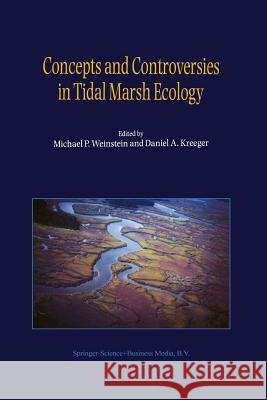Concepts and Controversies in Tidal Marsh Ecology » książka
Concepts and Controversies in Tidal Marsh Ecology
ISBN-13: 9789401740807 / Angielski / Miękka / 2014 / 875 str.
Concepts and Controversies in Tidal Marsh Ecology
ISBN-13: 9789401740807 / Angielski / Miękka / 2014 / 875 str.
(netto: 742,86 VAT: 5%)
Najniższa cena z 30 dni: 771,08 zł
ok. 20 dni roboczych.
Darmowa dostawa!
In 1968 when I forsook horticulture and plant physiology to try, with the help of Sea Grant funds, wetland ecology, it didn't take long to discover a slim volume published in 1959 by the University of Georgia and edited by R. A. Ragotzkie, L. R. Pomeroy, J. M. Teal, and D. C. Scott, entitled "Proceedings of the Salt Marsh Conference" held in 1958 at the Marine Institute, Sapelo Island, Ga. Now forty years later, the Sapelo Island conference has been the major intellectual impetus, and another Sea Grant Program the major backer, of another symposium, the "International Symposium: Concepts and Controversies in Tidal Marsh Ecology". This one re-examines the ideas of that first conference, ideas that stimulated four decades of research and led to major legislation in the United States to conserve coastal wetlands. It is dedicated, appropriately, to two then young scientists - Eugene P. Odum and John M. Teal - whose inspiration has been the starting place for a generation of coastal wetland and estuarine research. I do not mean to suggest that wetland research started at Sapelo Island. In 1899 H. C. Cowles described successional processes in Lake Michigan freshwater marsh ponds. There is a large and valuable early literature about northern bogs, most of it from Europe and the former USSR, although Eville Gorham and R. L. Lindeman made significant contributions to the American literature before 1960. V. J.











